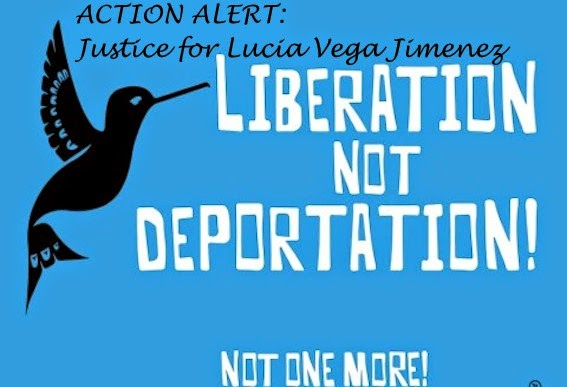
On October 23, 50-year-old Teresa Michelle Gratton wrote a letter to her husband Herb Gratton, her partner of 32 years, “PLEASE GET ME OUT OF HERE I DON’T BELONG HERE!! HELP ME! HELP ME! PLEASE!!!!!! … I don’t see how they can continue to keep me locked up like a criminal. I have no charges. I had already paid my time for my crime. I’ll leave Canada if that’s what it comes to, but let me out until that’s what’s desided (sic) if it comes to that.” A week later, on October 30, Teresa Gratton – beloved mother, grandmother, wife, life partner, permanent resident of Canada – was “found in medical distress”. Herb Gratton received a phone call, “Your wife died.” That was all that was said. To this day, the family does not know, and demands to know, what happened to their loved one. What happened to Teresa Gratton? The State murdered her. Canada murdered her. The global system of `immigrant detention’ her. To the extent that the system of immigrant detention continues, we all had a hand in murdering Teresa Gratton.
Everything about Teresa Gratton’s story is familiar, the entire spectacular of State indignity, brutality, and silence, with the family’s anguish as backdrop and soundtrack.
Herb Gratton, 58 years old, was born in Canada. When he was 13, he and his mother moved to Nashville, Tennessee. In 1985, he met Teresa. He says for him it was love at first sight. They dated, the moved in together, they started a family. They have three sons, Matthew, now 30 years old; Stan, 27; and Jacob, 24. Matthew and Stan are married with children. After 18 years together, Herb and Teresa were formally married, in 2003. Not long after, they moved to Canada. Herb, Matthew, Stan, Jacob, and all their children, are Canadian citizens. Teresa Gratton had been a legal permanent resident in Canada since 2011.
In 2004, Herb Gratton suffered a back injury. The couple’s financial situation deteriorated. Teresa Gratton worked off and on as a house cleaner. Teresa Gratton lived with fibromyalgia and osteoarthritis, which resulted in chronic pain, and anxiety and depression. She relied on hydromorphone, an opioid, which she obtained legally.
Teresa Gratton had a series of minor run ins with the criminal justice system. At the advice of her attorney, she pled out. That resulted in Teresa Gratton suddenly ending up in the immigrant detention system. Despite all evidence to the contrary, she was deemed a flight risk, and so was moved from was transferred from the Elgin-Middlesex Detention Centre in London, where her family lives, to the maximum security wing of Vanier Centre for Women, nearly 100 miles away. Herb Gratton doesn’t have a car. No one informed Herbert Gratton of the move. He had no idea where his wife was until she called him from Vanier.
Teresa Gratton was transferred on October 1 or 2. On October 30, she was dead. In the interim, she wrote daily letters to her husband, describing the torturous conditions in maximum security. A former resident recalls Vanier: “You go in wanting to kill yourself and the conditions just make you want to kill yourself more.” A former immigrant detainee of Vanier describes it as “terrible. There is nothing there…. Prisoners can only go outside twice a week for fresh air, for like 5 minutes… that’s it. We didn’t see sun, we didn’t see sky.”
Why was Teresa Gratton sent to Vanier Centre for Women? To die. Since 2000, at least 17 people have died in Canada’s immigrant detention system. In 2013, Lucia Vega Jimenez was found hanging from a shower stall in the `immigration holding center’ at the Vancouver airport. Reporters, friends, advocates asked many questions. Silence. Lucia Vega Jimenez’ case was a cause celebre, and yet here we are, four years later, and Teresa Gratton is dead, and her family, to this day, awaits information, something more than, “Your wife is dead.” Something more than silence. Something to answer their loved one, Teresa Gratton, crying, screaming in agony, “PLEASE GET ME OUT OF HERE I DON’T BELONG HERE!! HELP ME! HELP ME! PLEASE!!!!!!” PLEASE!!!!!!
(Photo Credit: Anne-Marie Jackson / Toronto Star) (Video Credit: YouTube / Toronto Star)

